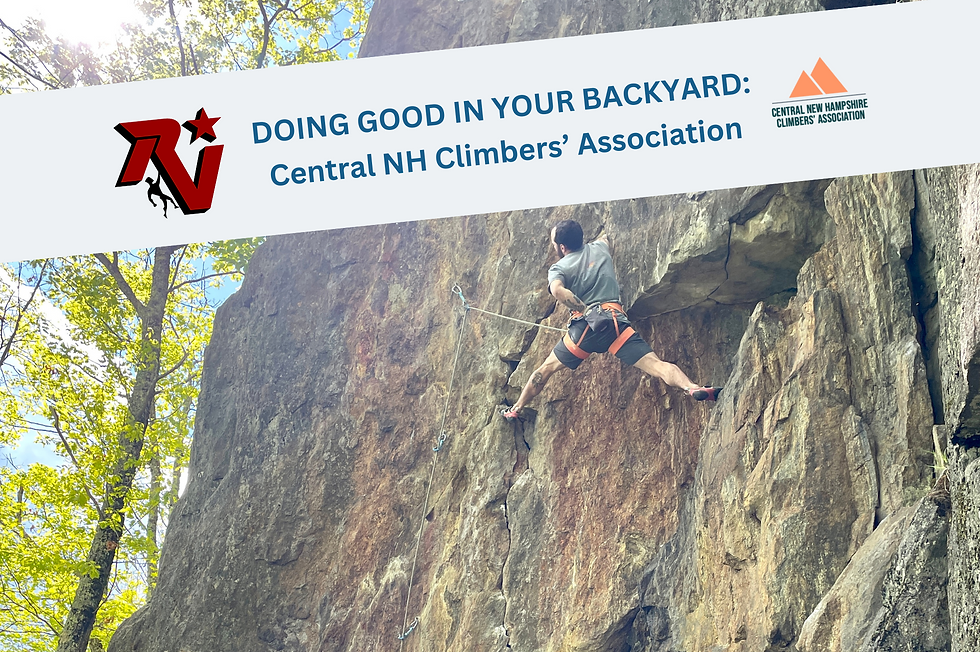Mountains of Debt: What Do We Owe Our Climbing Areas?
- Dovi Hirsch
- Oct 10, 2022
- 3 min read
by Christopher Schafenacker

Rock climbing isn’t like other sports. We don’t run around a court or spin laps on a track. The places we play weren’t designed for our use and are more than just spaces to recreate. Climbing areas are both a blight on and an invitation into nature. In scrubbing the ecosystems off rockfaces and littering them with bolts we destroy little pieces of the outdoors so that we can later come to love them. Climbers nurture a parasitical appreciation for nature and this uncomfortable fact leads to a lot of hand wringing about our responsibility as stewards.
What debt of care do we owe the natural places we cherish and exploit? One climber you’ve probably heard of believes the answer is a very big one—and he just put his money where his mouth is to prove it.
On September 14, The New York Times broke the story about Patagonia founder Yvon Chouinard’s decision to give away his $3 billion company in an effort to ensure all its future profits are used to fight climate change and protect nature. He didn’t do it for tax benefits or as a veiled PR campaign; he just did it because he thinks it was the right decision.
Not many climbers are in a position to dedicate 98% of their worth to protecting the outdoors but all have some responsibility to look after the natural places they frequent. Even those not concerned about ecosystems and biodiversity and the planet’s survival need to worry about access issues. Maybe stewardship’s an ethical stance for you, maybe it’s just a means to keeping your local crag open. Whatever it is, it’s important and so we thought we’d take our cue from Chouinard and dedicate an article to listing ways climbers can do their part.
5 Ways You Can Care for Our Climbing Areas
1. Join the Access Fund
The Access Fund is a non-profit advocacy organization that works to protect America’s climbing. Their numerous campaigns seek to protect public lands, buy threatened climbing areas, restore ecosystems, replace aging bolts, and mentor responsible climbers.
2. Get Involved with Your Local Climber’s Coalition
Many climbing areas in the US are cared for by a local climber’s coalition. In Massachusetts, we have the Western Massachusetts Climbers Coalition (WMCC) in the west and the Southeast New England Climbers Coalition (SNECC) in the, well, south and east. Both organize trail maintenance and fundraising events to support their stewardship efforts and both are always looking for support.
3. Practice Good Crag Etiquette
Stay on trails. Poop responsibly. Pack out your garbage. Leave vegetation alone. Leash your dog (or leave it at home). Forget your Bluetooth speaker. Park appropriately. Report bad bolts or anchors to your local climbers coalition. Donate the money needed for replacements. Brush your holds. Buy your local bolter a beer.
4. Carpool
Soaring demand is threatening crags across the US. A lot of this has to do with erosion along trails and at the base of climbs but plenty is also related to parking. Waiting for parking on busy days never looks good to landowners or local communities and so if you’re getting out this weekend, consider carpooling with a friend.
5. Support Local Economies
The best way to convince a town that climbing is good is to show them the money. Grabbing a beer after a day of cragging? Search out the nearest pub. Planning a vacation to, well, wherever? Stay at a local Airbnb or campground and eat at local restaurants if you can.
While donating your life’s work to protecting this environment is commendable (to put it mildly), it’s not something every climber can do. Nevertheless, we can all do something and, frankly, we all should.
Featured Climbing Training Gear
Maverick: The on-the-go, bring it anywhere hangboard. On a family road trip to keep your fingers in shape. We like to bring this to the crag with us to keep our fingers warm—without losing skin on mediocre warm-ups—at that steep, thuggy sport crag.
The Rocket Wall: Available in 6’ and 8’ widths, it’s been tough for us to keep up with the demand for this innovative home climbing wall solution. Slightly overhanging, the Rocket Wall is big enough to set routes on, or to build a systems board.
The Rock-Stah: Our handcrafted version of a traditional hangboard, with curving crimp rails to help alleviate unnecessary strain on your pulleys. Because ain’t no one got time for a finger injury…
The Rocketeer Wall: our free-standing adjustable solution for those who can’t mount a hangboard anywhere in their home or apartment—or who are limited on space. The Rocketeer gives climbers the additional option to set specific climbing holds. Recreate the crux holds of your proj and get ready to send, bruh.











Comments